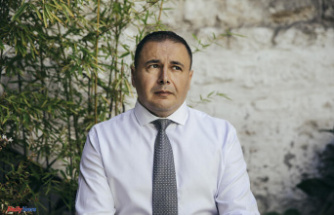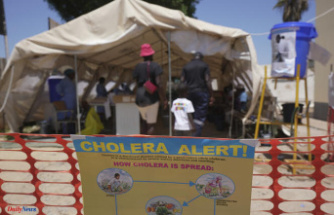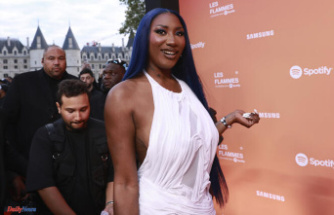Jayroy Makokis, 30, was haunted by the sound a child's crying making in the background after he watched a video showing a fighter plane dropping missiles on a Ukrainian village. Makokis, a 30-year-old Canadian, was struck by the sound of a child crying in the background. This made Makokis think about the long history of friendship between his community, the Saddle Lake Cree Nation, Alberta, and Ukrainian immigrants who arrived in the early 1900s.
He said that they survived shared hardships, including the forced relocation of his Indigenous people and Canada's discrimination towards the new Ukrainian immigrants. They grew closer and ensured their children were not hurt.
Makokis has over 800,000 followers on TikTok and made a simple plea for his fellow Saddle Lake Cree Nation members.
He said, "There are women, children, and elders that are afraid."
The "kokum," brightly colored scarves called "babushkas" and embroidered with ornamental flowers, is a symbol of the Cree's friendship to Ukrainians. They were given to the Cree by Ukrainian immigrants. The Cree called them "kokum," which is Cree for "grandmother." Elders who wear the scarves for community gatherings often wear them.
Makokis stated, "What I would like to ask my Turtle Island friends is that you put on a kokum scarf for our Ukrainian brothers and sisters."
The kokum is a symbol of solidarity in social media. People in Canada and the U.S. have taken selfies wearing scarves that feature messages supporting the resistance. On Twitter, TikTok and Facebook, people have posted dozens of pictures of themselves adorned in kokums with hashtags like #solidaritywithukraine.
Sherry Mckay, an Anishinabe content creator said, "This is something we have a relationship with." Her grandmother Cree wore a kokum scarves a lot. "So, let's show our support by wearing our kokum scarves.
Leah Hrycun is a Ph.D student at the Faculty for Native Studies of the University of Alberta. She focuses on Indigenous relations and Ukrainian relations.
She said that the Canadian government started recruiting Ukrainians to move and farm on the lands of Alberta in 1891.
Hrycun stated that "they really wanted white settlers to come to settle the land in order to make it Canada" and then to displace Indigenous peoples who were already there.
She stated that many young Ukrainians were unable to find land and took advantage of the opportunity. Hrycun stated that they had extensive knowledge of grain crops and the different types of crops that could grow in the prairies. "It seemed to me like a very obvious fit for the Canadian government."
Hrycun stated that the connection between the Ukrainians and Indigenous communities grew over time as each faced discrimination.
She said, "There are many stories of trade back-and-forth, of people sharing farm implements and people lending each other horses, or teams of animal to work their lands." She added that many Cree now have Ukrainian names.
The Canadian government declared thousands of Ukrainians "enemy aliens" during World War I and placed them in internment camps.
Makokis and other Indigenous culture leaders believe that Ukrainian and Indigenous cultures have shared connections through their struggles and trade.
Makokis stated that "the elders still wear scarves today in memory of their good standing and friendship."
Makokis stated that the kokum is now also a symbol of solidarity against the threat from imperialism and an opportunity to return to tradition, ceremony, and reconnection
He said that the vibrant cloth he sees draped across his elders' heads and folded across the foreheads young men is a symbol of unity.












